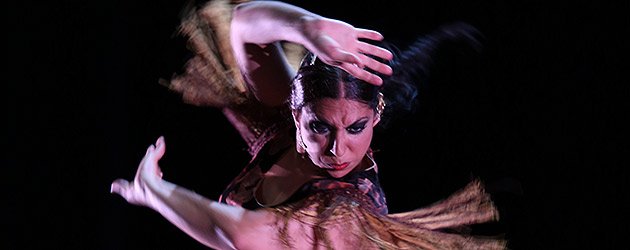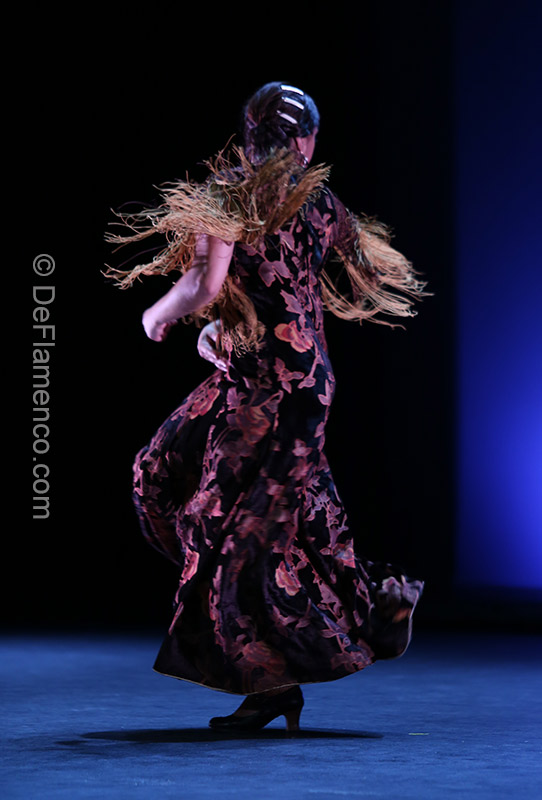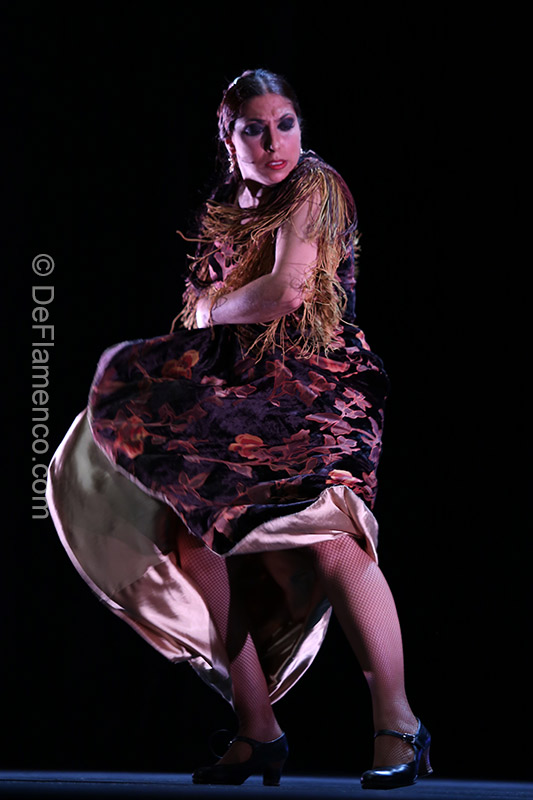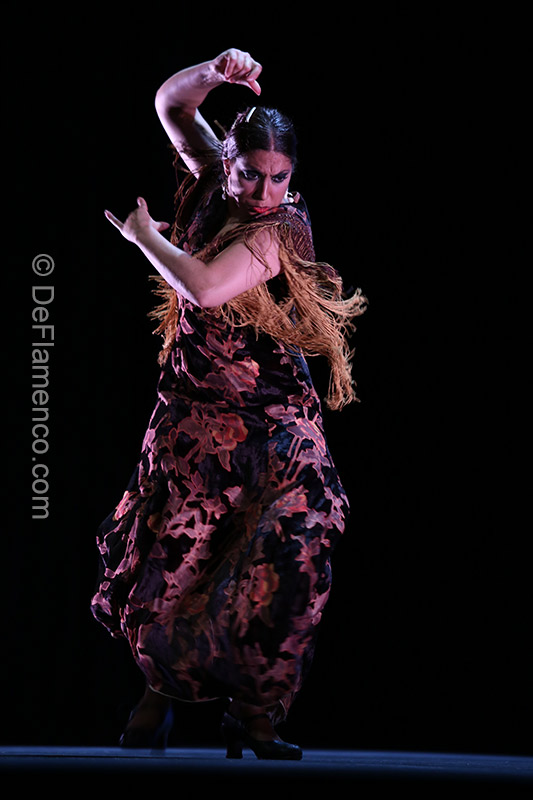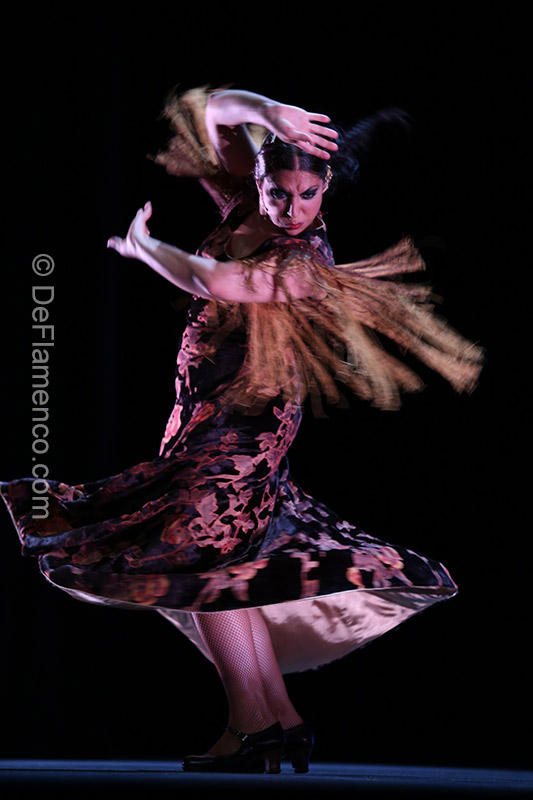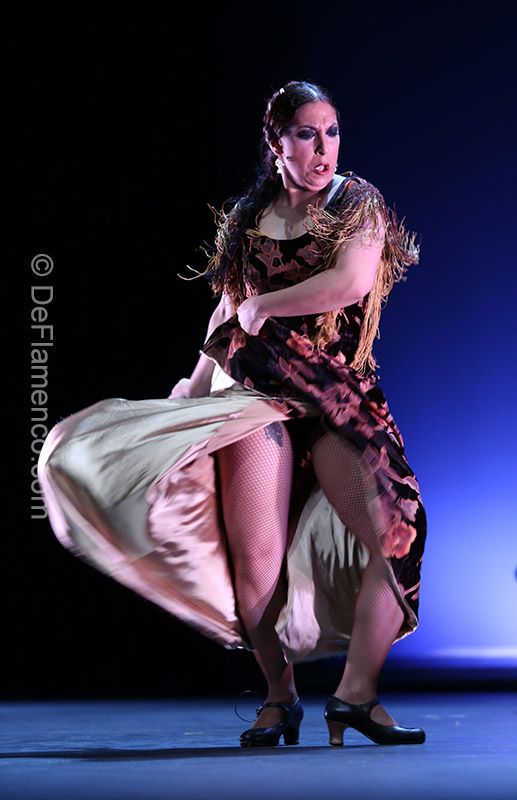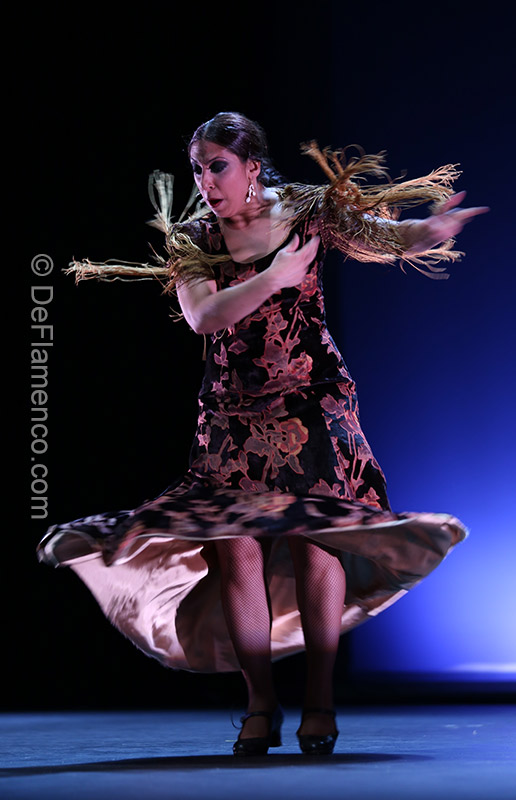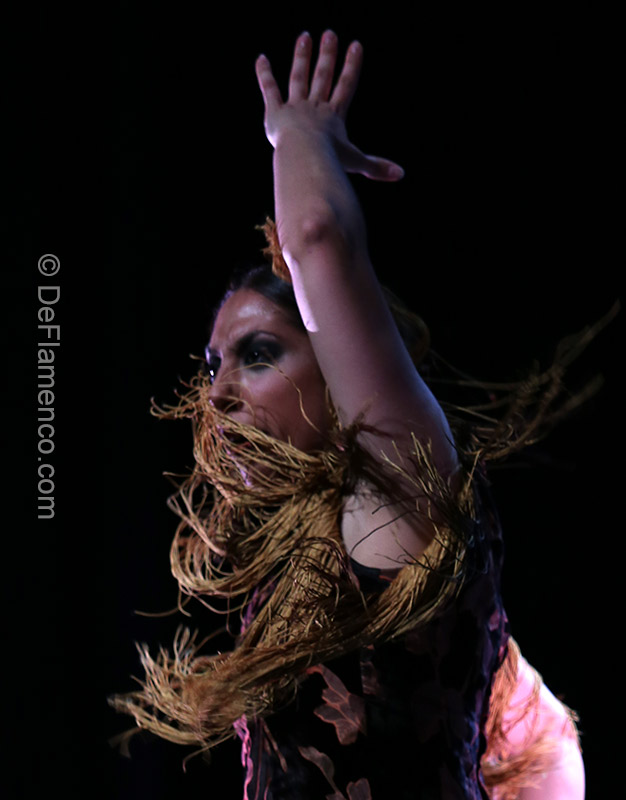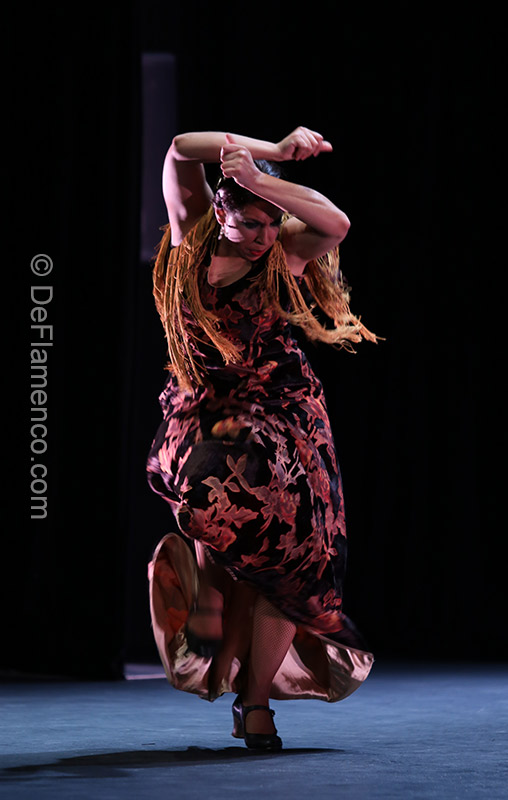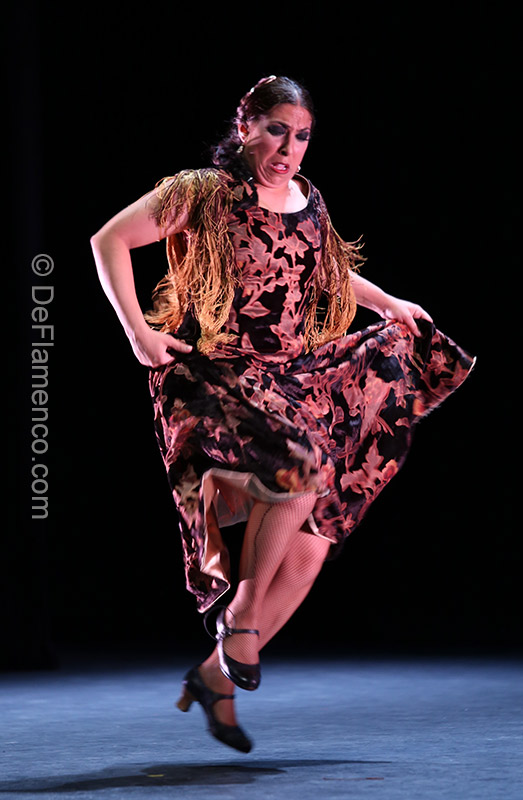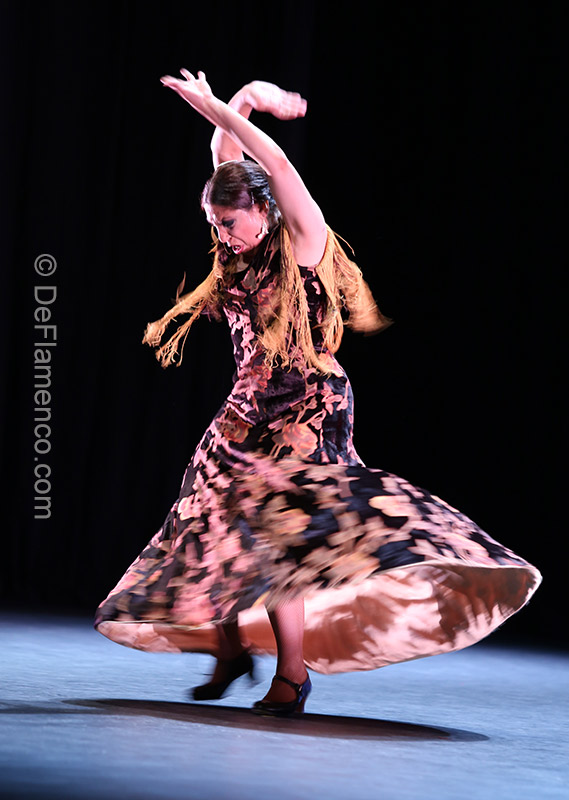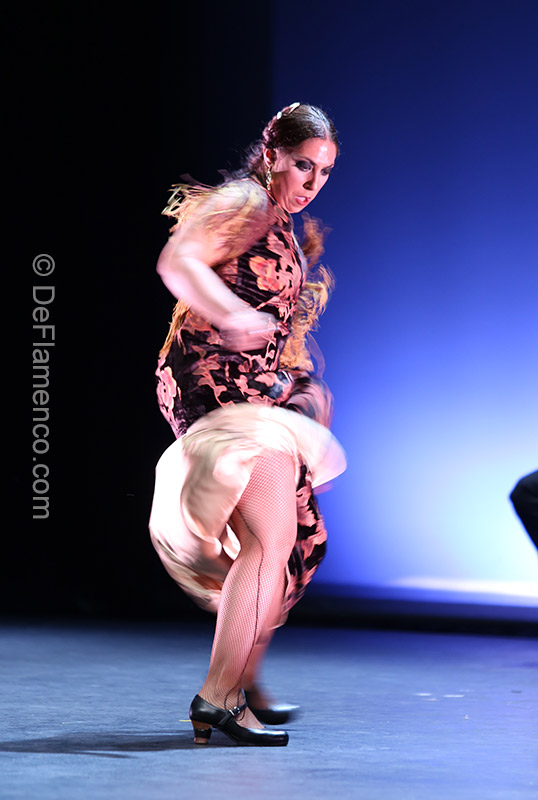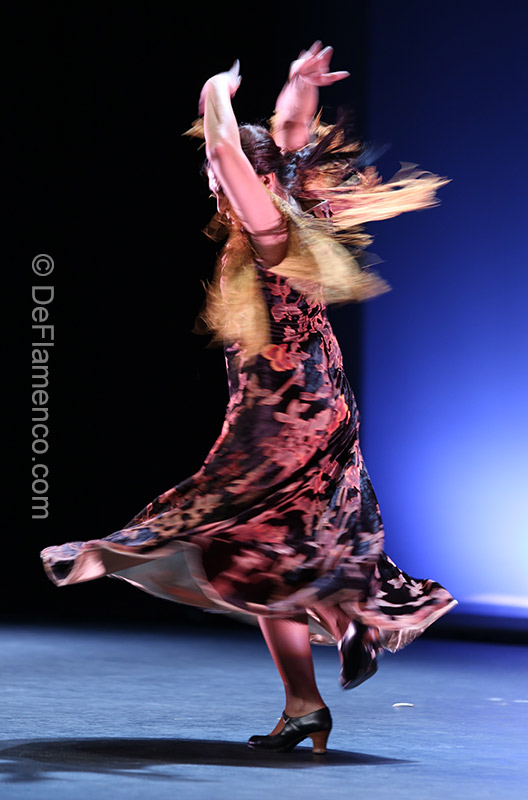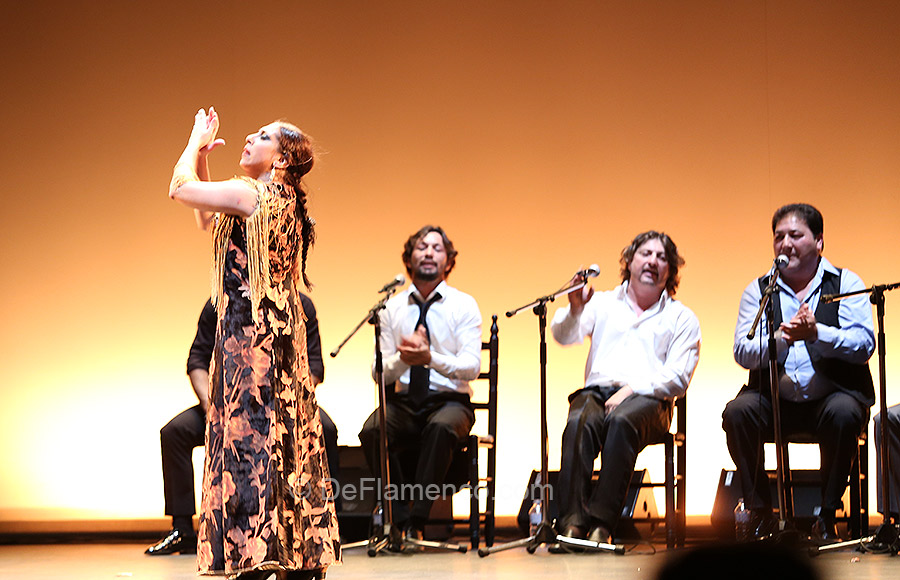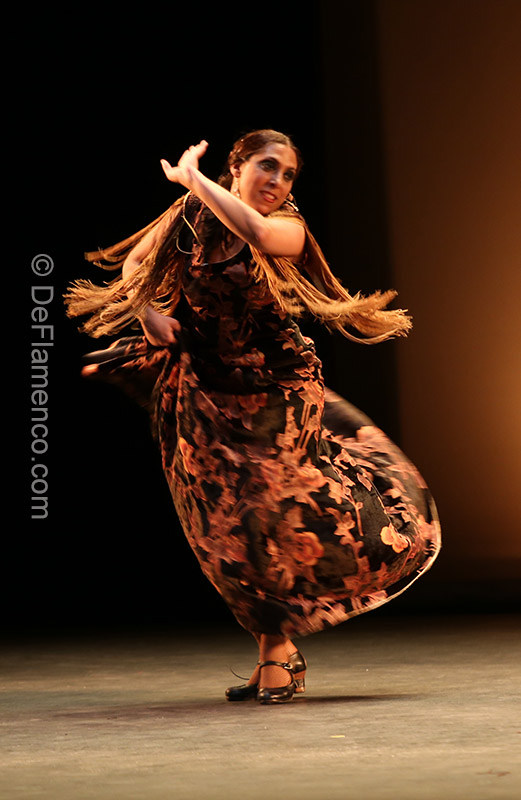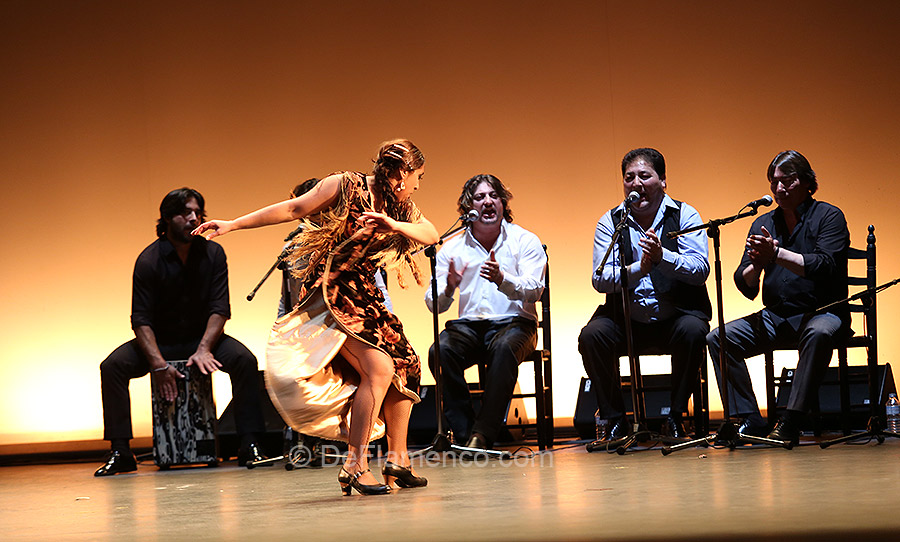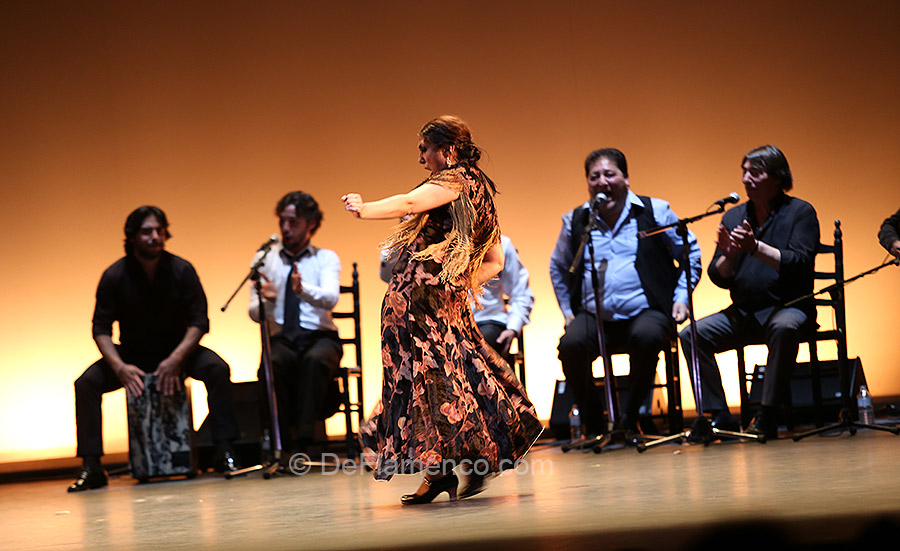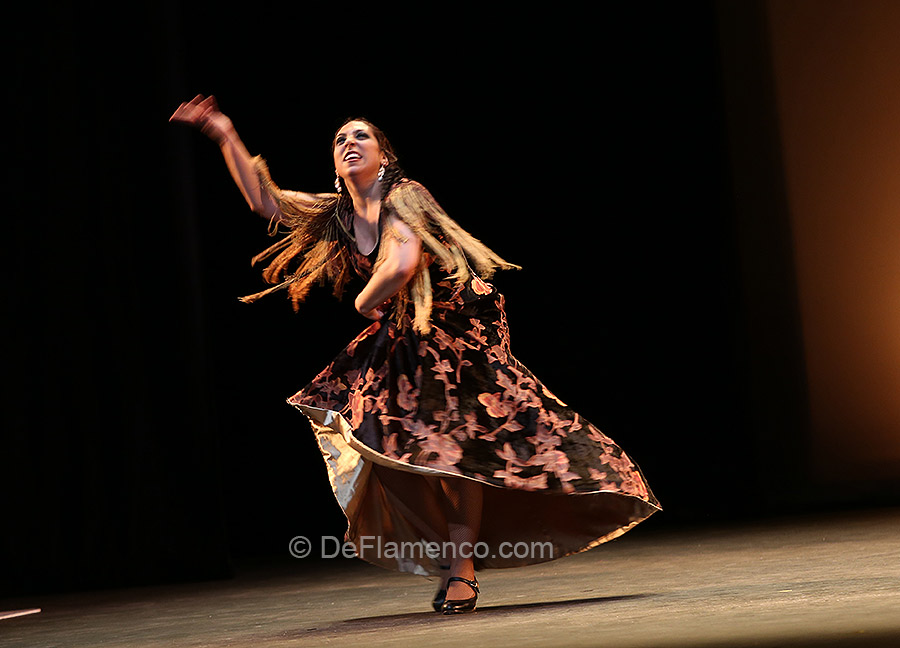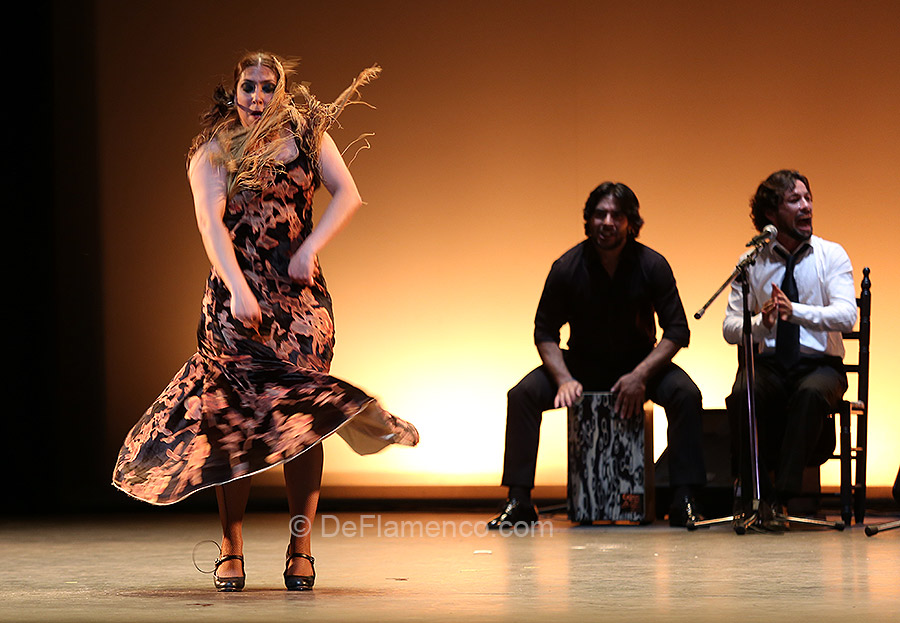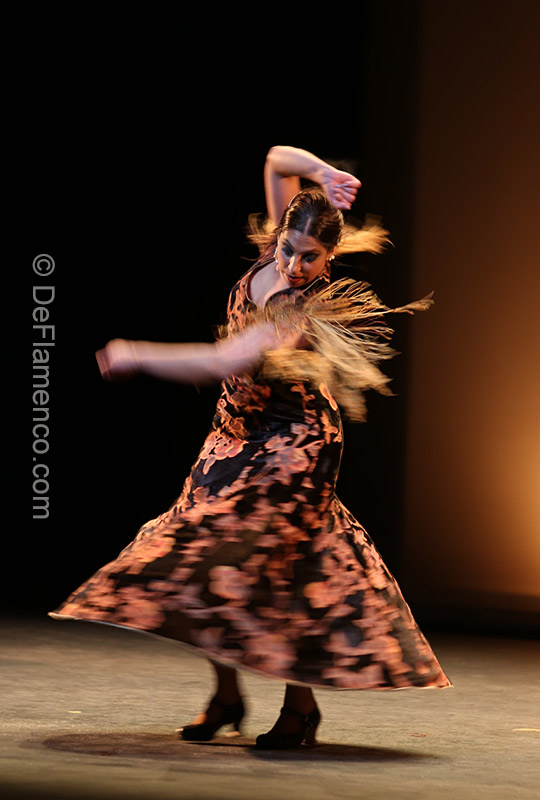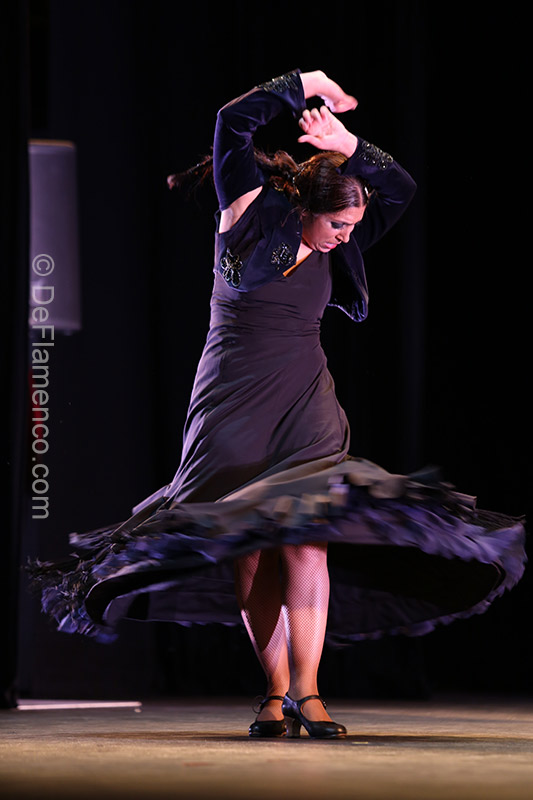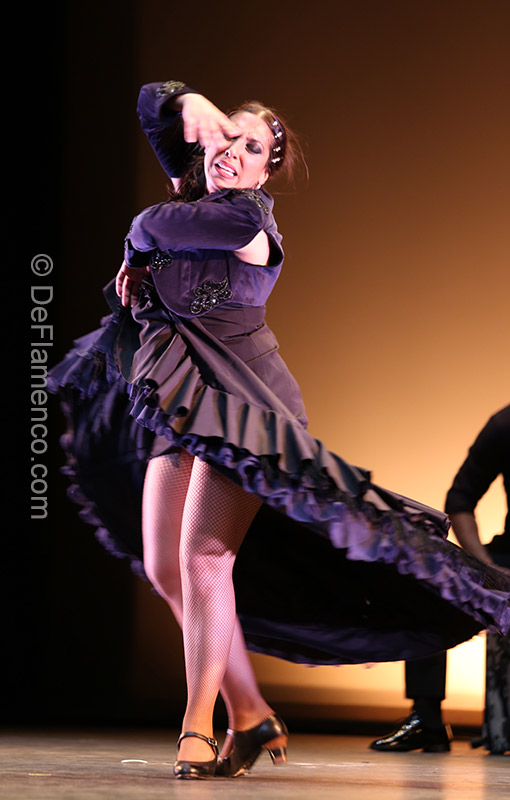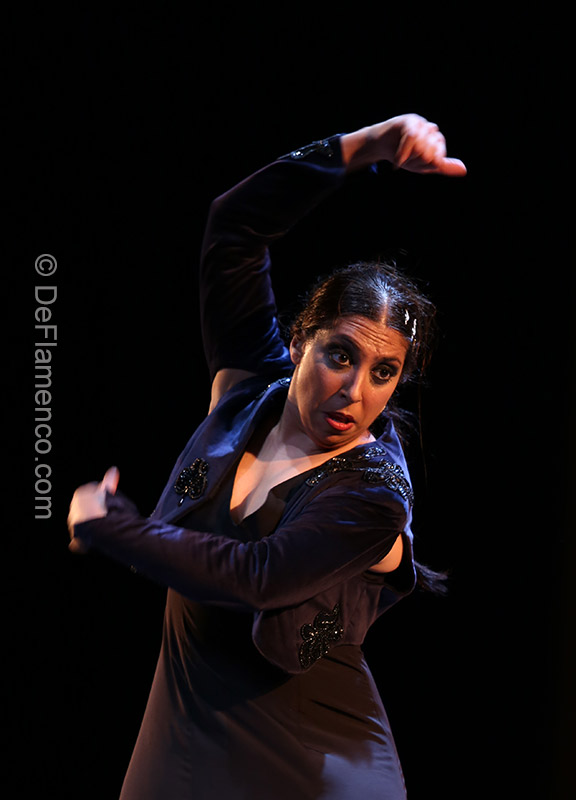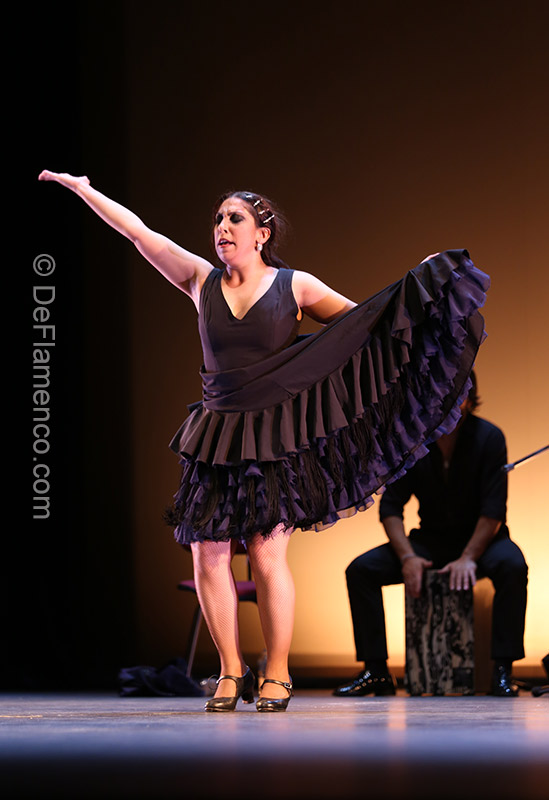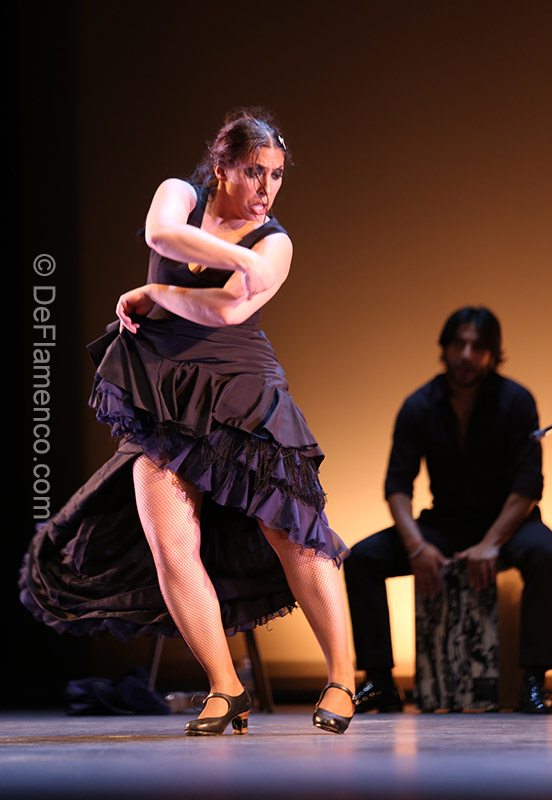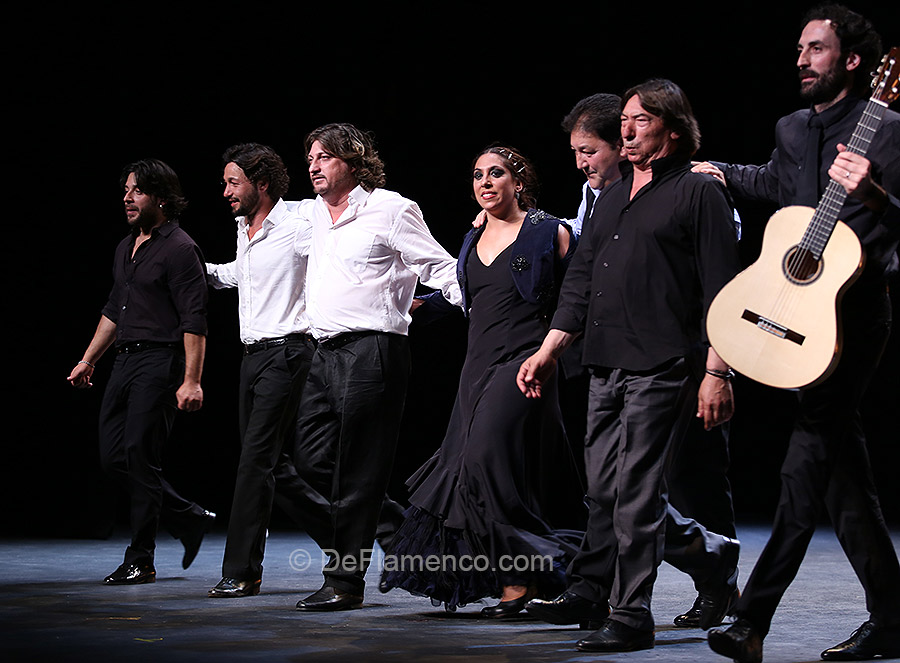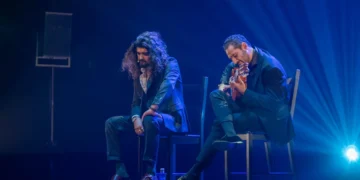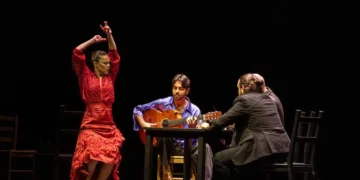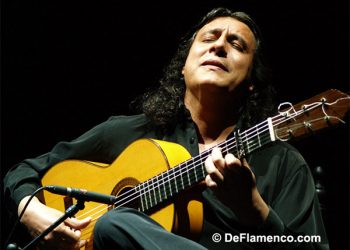Text: Silvia Cruz Lapeña
Photos: Rafael Manjavacas
Centro Cultural Paco Rabal
June 22nd – Suma Flamenca
Homenaje a Carmen Amaya
Dance: Fuensanta “La Moneta”
Guitar: Luis Mariano
Cante: MigueL Lavi, Juan Ángel, Antonio“El Nitro”, Jaime Heredia “EL Parrón”
Percussion: Miguel Rodríguez “El Cheynne”
Director and choreographer: La Moneta
Music: Luis Marinao
Artist, magician and sage
Fuensanta la Moneta came to the Centro Cultural Paco Rabal to pay tribute to Carmen Amaya with a first-class group that suffered from poor sound quality and little-rehearsed lighting. Fortunately, Fuensanta soon showed her intensity, bestial and masculine, and all that was missing was to pull her hair out to show that if Amaya was “la Capitana”, she is in a position to command any army without even having a rank.

In her third appearance, her arms were draped in fringe as if covered with tears, and her hands spoke more than others manage to say with their whole bodies. She didn’t repeat herself, nor did she tire, she looked like no one else and shortly after she began dancing everyone had forgotten about La Capitana. She managed to keep in character and sustain every movement without rushing, without giving in to speed or floor-pounding. She was momentarily a child, running around the stage, even seeming to enjoy her own private game.
But suddenly, as if she’d discovered something unsuspected and mortal, her look changed, she smiled a cold smile and aged thirty years. She left the stage and returned with fringe changed for the ruffles of a black skirt, accompanied by castanets that sounded like small drums of death. If it’s true Carmen Amaya danced to live, it’s no less true that La Moneta was able to pull out that feeling of a constant life and death struggle that was also present in La Capitana’s dancing. There, dressed in black, Fuensanta became a magician, she invoked a spell and brought Carmen Amaya back to life, but in her own body, with her own resources and in her own way.
It’s possible the show needs a more substantial story-line, but after seeing her dance, it was clear that La Moneta can more than make up for the lack of a plot. That was clear, as it was also clear that she no longer competes. She doesn’t need to. Nor did she make the mistake of so many other dancers and choreographers who pay tribute to Amaya: she didn’t imitate her or even try to.
What La Moneta did emulate of the Catalonian dancer, and quite cleverly, was the look in her face. Fuensanta is an excellent actress, and in Madrid she was a first-class interpreter. The drama in her eyes was terrible, yes, but it was also a well-worked look that allowed us to believe that she had disappeared and it was her reflection that moved across the stage. She was transported in a credible ecstasy that was nothing less than chilling: the perfect touch for a show that aimed to bring to earth the spirit of a dancer as tragic as Carmen Amaya.
Moneta did not merely dance. Because no one, without being an artist, magician and sage could possibly do what this woman achieved at the Suma.
Fuensanta La Moneta



